Privacy Policy Template for Clothing Websites

Do you want to know how to create a privacy policy for a clothing website? If your answer is yes, you’ve come to the right place.
Nowadays, having a legally compliant privacy policy helps you to comply with global laws like GDPR and CCPA. It’s a requirement by these laws to possess a privacy policy for your business website.
Speaking of which, if you’re running a clothing store website, it’s crucial to have a detailed privacy policy that clearly outlines the company’s privacy information to help your users.
This is because today, customers are highly aware of their data privacy rights. Failing to provide them with transparency can lead to multiple legal consequences.
To overcome this issue, we’ll discuss how to make a privacy policy for your clothing website.
Read through to find out how easily you can make one!
What is Privacy Policy?
A Privacy Policy is a legal document that informs customers how your business collects, uses, shares, and protects their information.
It should be on your checklist when creating and maintaining your own clothing store, as it ensures legal compliance with global laws such as GDPR and CCPA.
International laws, such as GDPR and CCPA, have made it mandatory for all website owners to have this document on their websites in order to collect any kind of customer information.
If you fail to comply with these laws, you could face hefty fines. Not only that, but your brand reputation could be affected, and worse, civil lawsuits and possible jail time could follow.
Global Privacy Laws Affecting Clothing Websites
Various privacy laws could affect your clothing website. As discussed in the previous section, laws like GDPR and CCPA mandate the provision of privacy policy documents. Those who don’t follow these laws will get into serious trouble.
Similarly, we’ll discuss multiple other global privacy laws, including GDPR and CCPA, which could potentially affect your clothing website.
Overview of Global Privacy Laws
- General Data Protection Regulation (GDPR): This law applies to all businesses that handle EU citizens’ data and sometimes to businesses outside the EU. If you don’t comply with this law, you can face fines of up to 20 million pounds or 4% of your total annual turnover, whichever is higher.
- California Consumer Privacy Act (CCPA): The CCPA law specifically protects California users. It will ensure businesses disclose their data collection practices to maintain transparency. The best part of this law is that it allows users to access and delete their personal information.
- California Online Privacy Protection Act (CalOPPA): This law also mandates that the privacy policy document showcase their data collection practices with every critical detail, such as what data is collected, how it’s used, and the policy’s effective date.
- Children’s Online Privacy Protection Act (COPPA): This law requires website owners to obtain the parent’s consent before collecting data from children under 13 years of age.
- Personal Information Protection and Electronic Documents Act (PIPEDA): Like the CCPA in California, this law applies to Canadian businesses requiring transparency in data handling. It also ensures that users are informed of their rights.
- Australia’s Privacy Act 1988: This law governs the data handling of Australian businesses. It requires businesses to adhere to strict guidelines for cross-border information sharing.
- Brazil’s General Data Protection Law (LGPD): This law’s policies match the GDPR’s. LGPD applies to businesses operating in Brazil. It will ask for the user’s explicit consent and transparently disclose the data handling process.
- Personal Data Protection Act (PDPA): This law governs businesses in Singapore. It ensures that users know how their data is being collected, used, and disclosed. It focuses on obtaining user consent and ensuring data security.
Consequences of Non-Compliance
I’m saying again. Failing to comply with these laws means facing severe penalties and lawsuits. And, when you’re having a clothing store catering to a global audience, staying informed on these regulations should be one of your top priorities.
It’ll help you foster trust and avoid legal complications.
How to Create a Privacy Policy for Your Clothing Website
Now that you understand its importance, let’s create a privacy policy for your clothing website.
However, creating a privacy policy can take a lot of work. You can’t make any mistakes and must ensure that whatever you write is legally sound.
So, to make your life easier, we’ll guide you through creating a privacy policy document using a privacy policy generator. It will save you tons of time.
It’s not rocket science. It’s a straightforward process. If you meticulously follow every step I mention, you can easily create a legally compliant privacy policy for your clothing website.
WP Legal Pages – Legal Pages Generator for WordPress Sites

WP Legal Pages helps you generate professional legal documents for your WordPress website. You can easily generate documents like Privacy Policies, Disclaimers, and Terms and Conditions in a short amount of time.
It has a wizard that guides you in quickly building the legal pages. The process is streamlined. You won’t have any trouble creating legal documents, even if you’re a novice.
There are so many advantages to using this, like building trust with the users, avoiding fines and legal issues, and, mainly, saving you tons of your precious time.
Now that we’ve decided on a generator, let’s look at how to create a privacy policy for your clothing store using WP Legal Pages.
Step 1: Installing WP Legal Pages Plugin
Go to your WordPress dashboard and hover over Plugins > Add New.
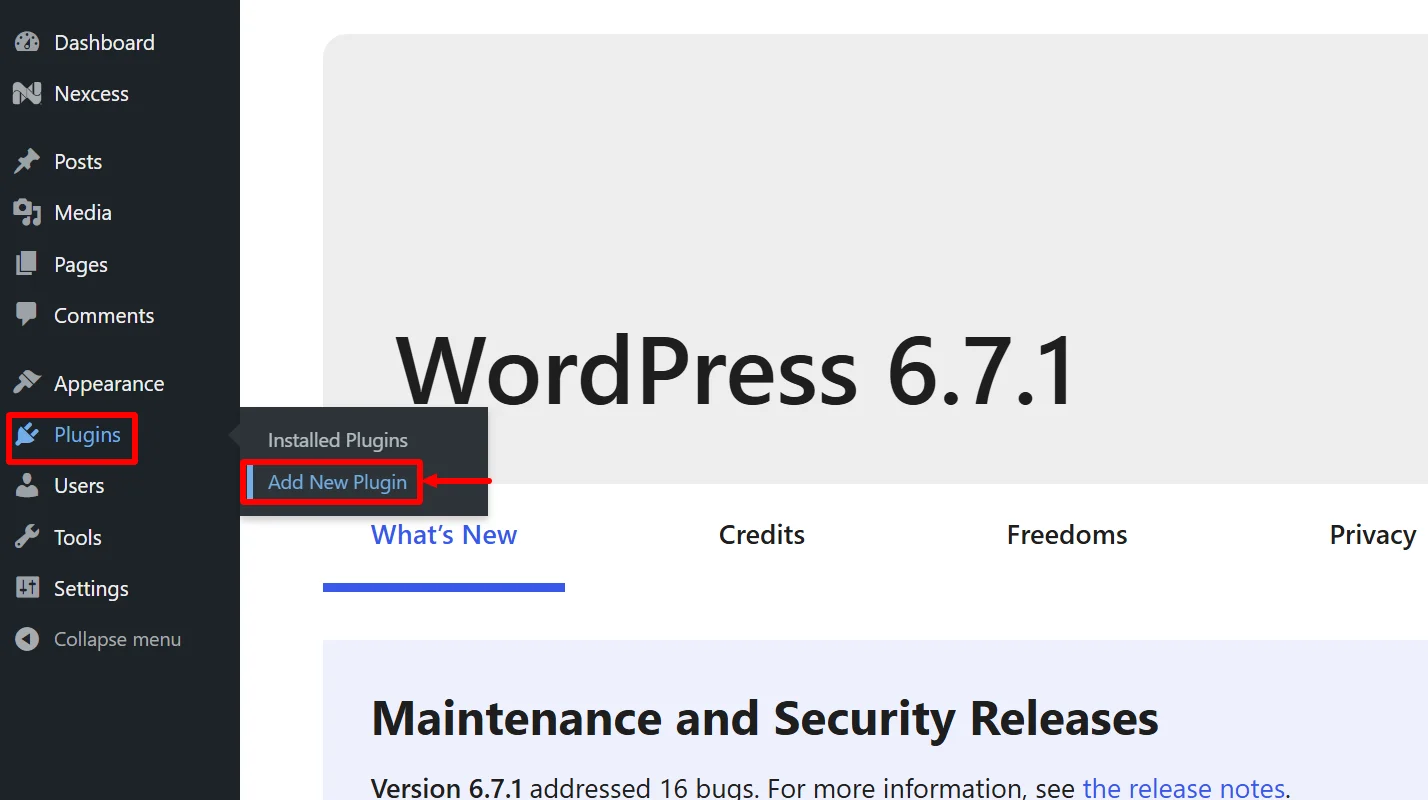
Type “wp legal pages” in the search bar.
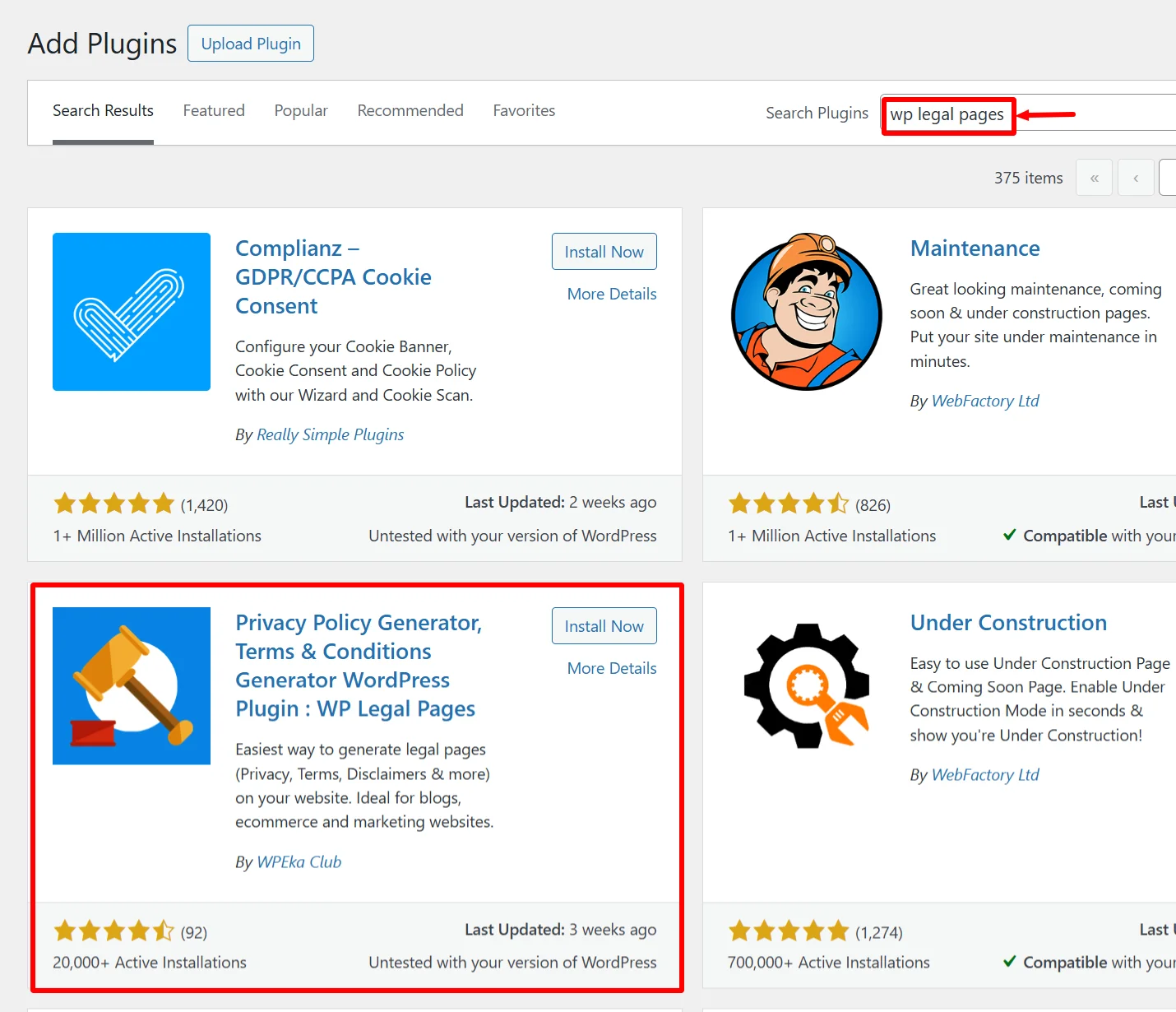
Look for WP Legal Pages in the results and install it by clicking the Install Now button.
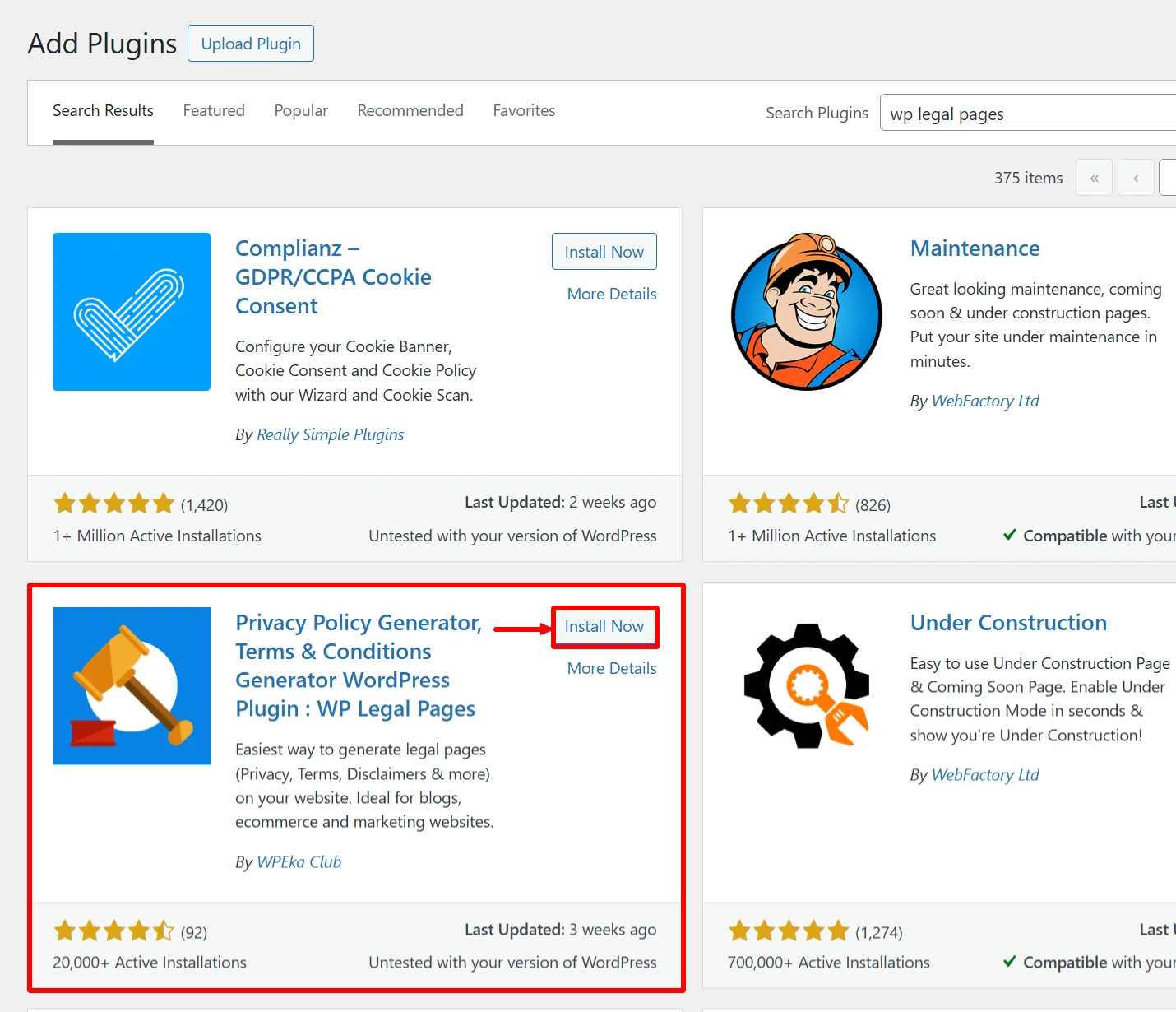
You’ll see the Activate button a few seconds after clicking on the Install Now button. Click on it.
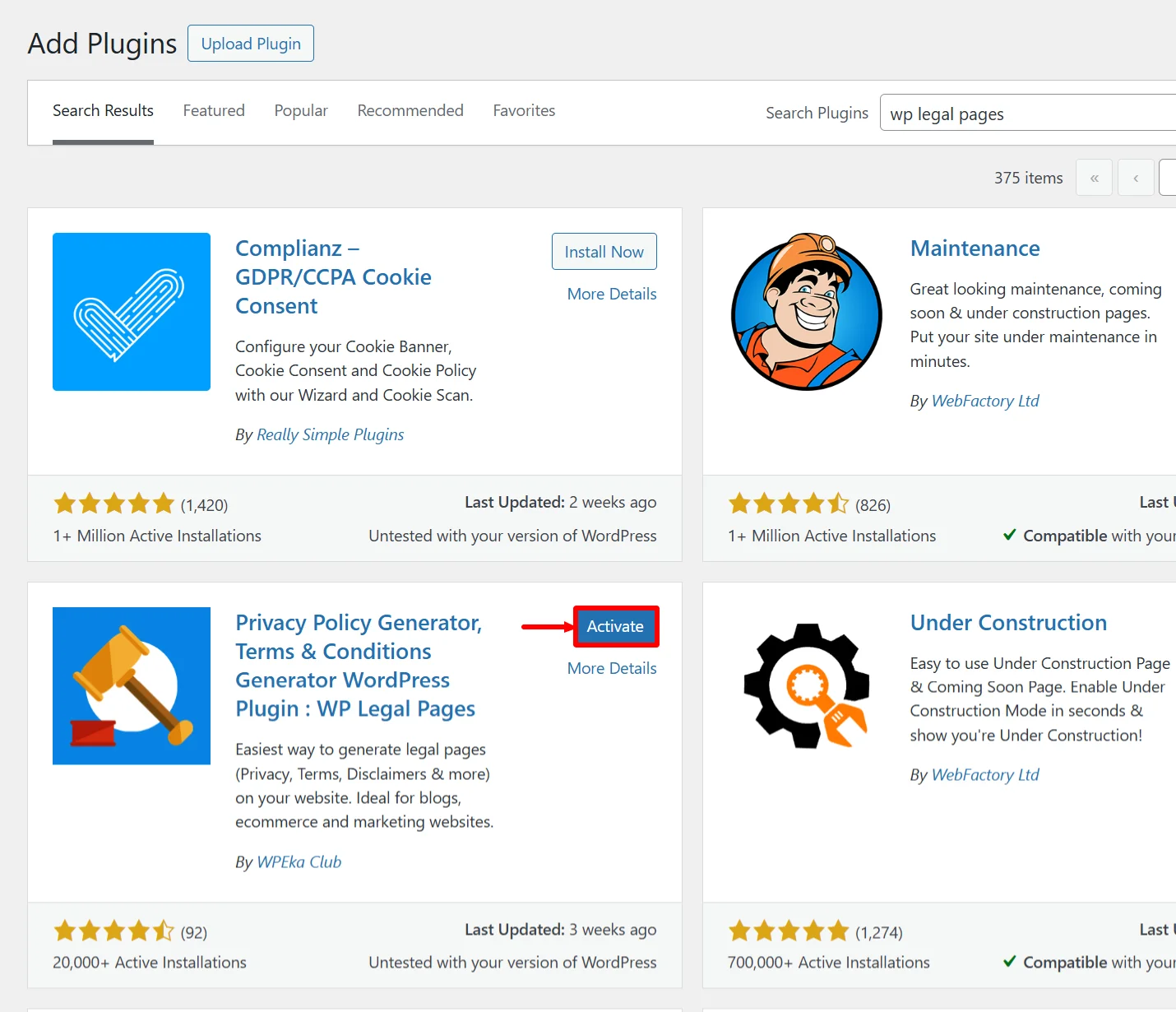
Congrats! Now, you’ve successfully installed and activated the plugin.
Step 2: Configuring WP Legal Pages Plugin
After installing the plugin, you can go to the Dashboard. You can find the WP Legal Pages section on the left-hand side.
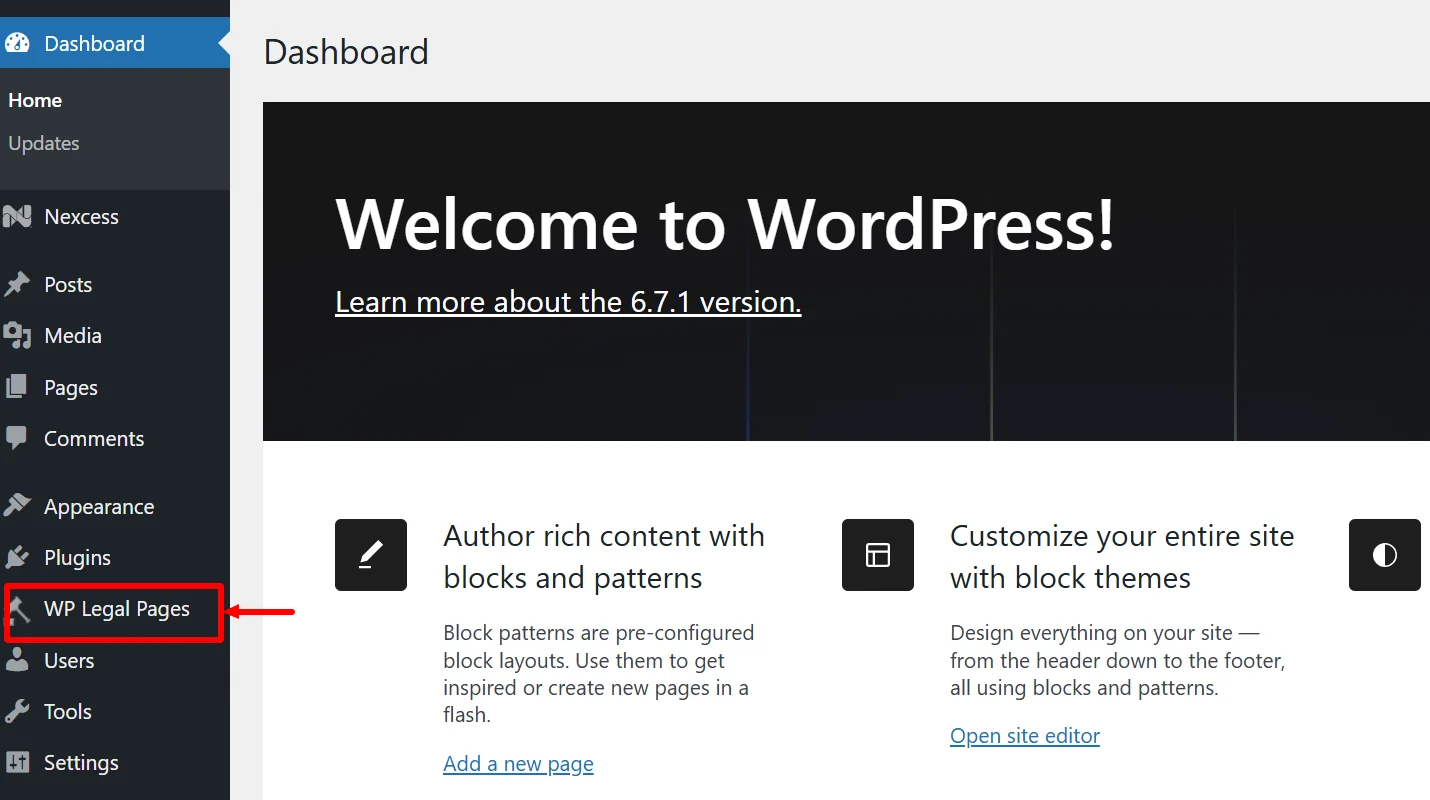
After this, a pop-up with the terms and conditions will appear. Read it carefully, tick the checkbox, and click the Accept button to proceed.
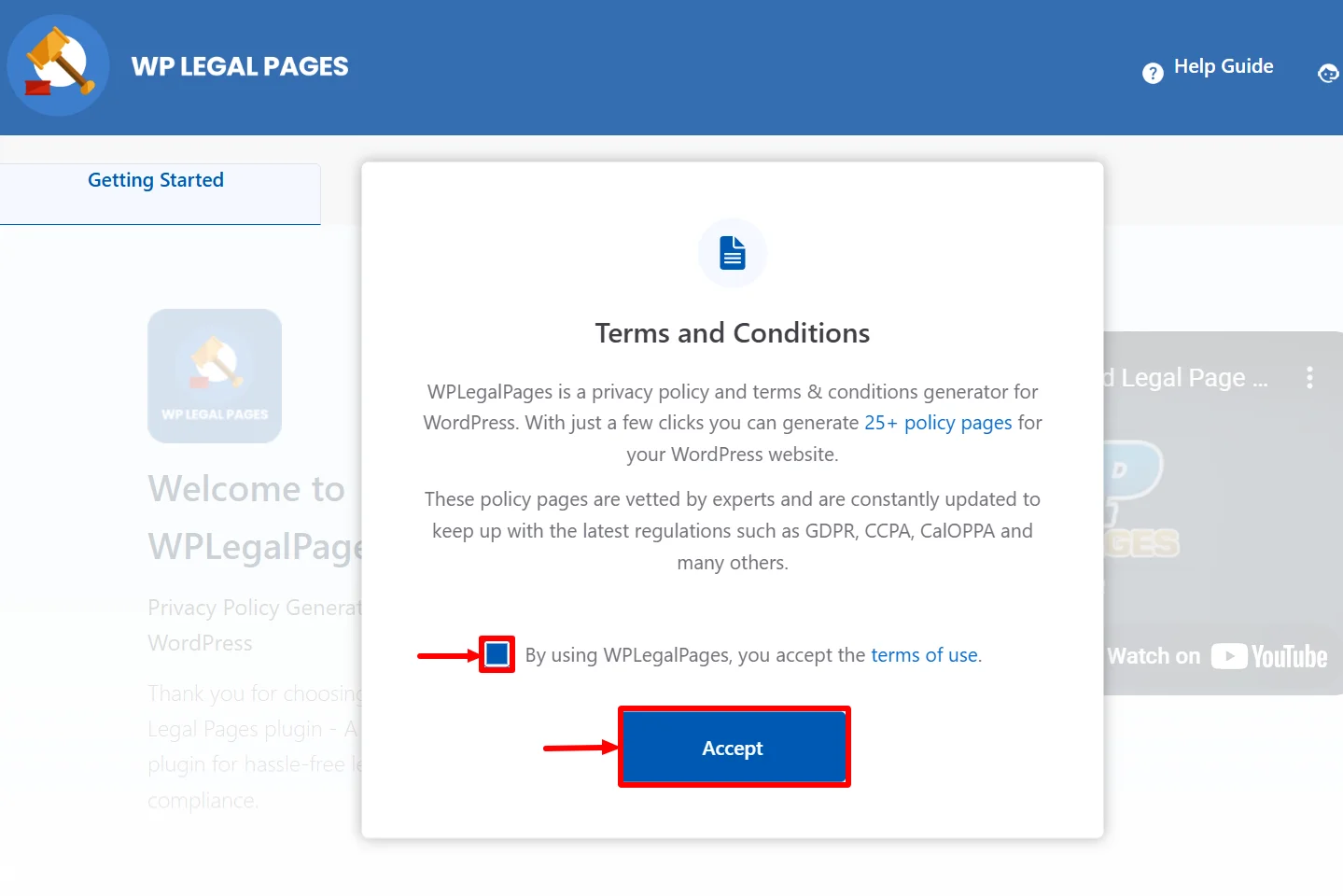
You will find a page, as shown in the picture below. Click on the Create Legal Pages tab.
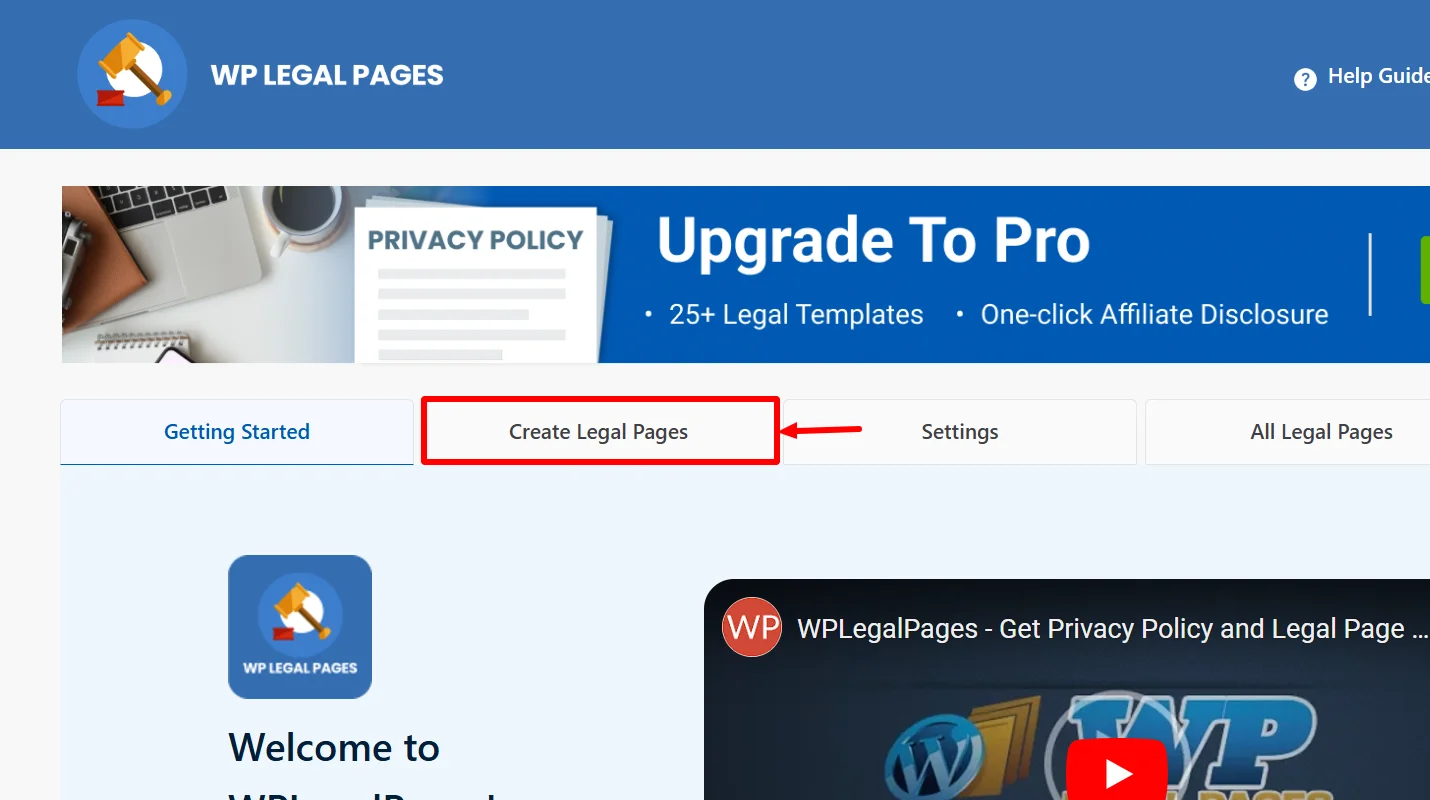
You’ll have entered the wizard. If you scroll down a little, you will find the Available Templates section. This section contains four free templates that are available for free.
Choose the first one, the Standard Privacy Policy.
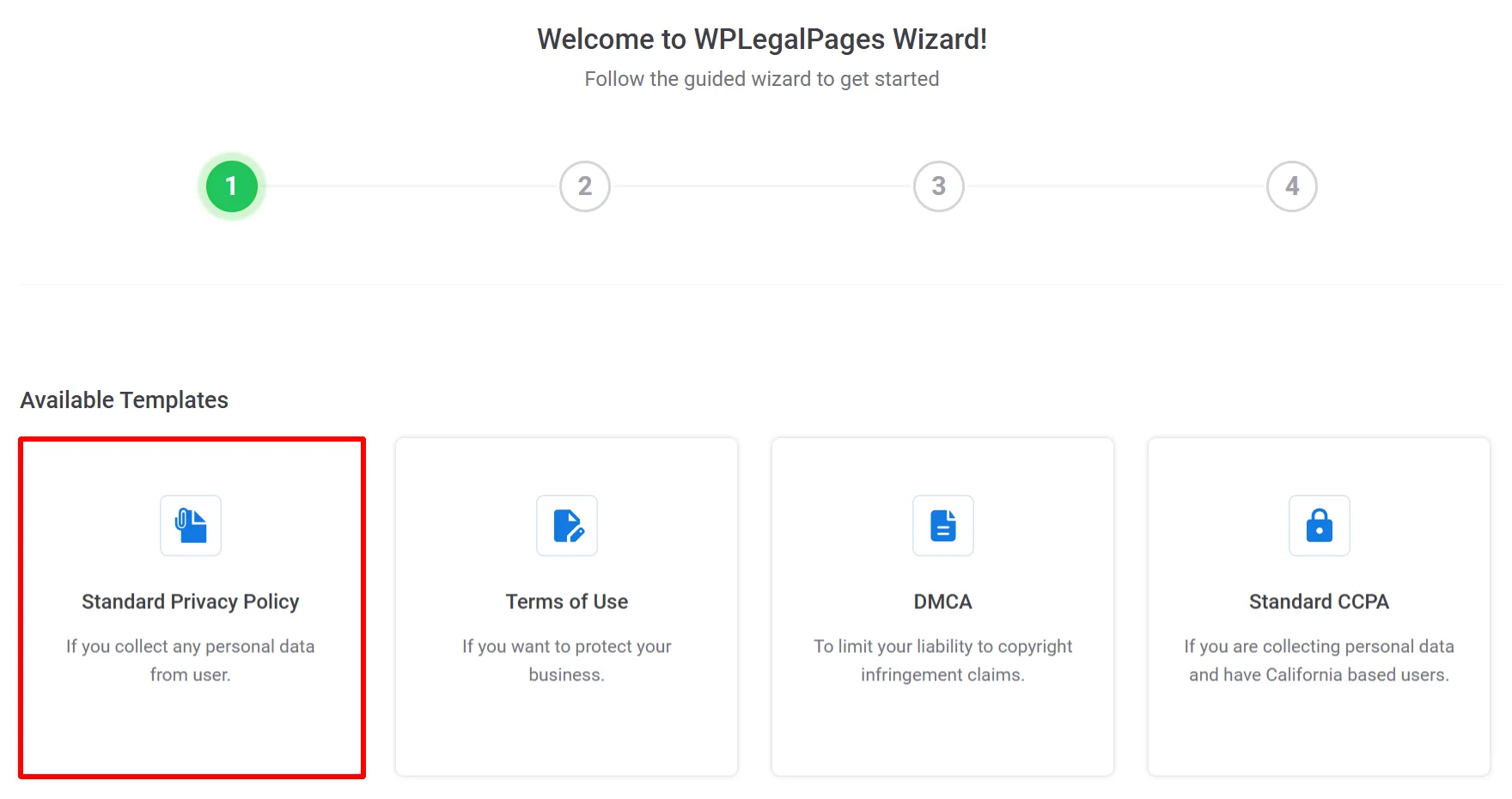
You will find a pop-up asking you to Sign Up. Click on the Create an Account button.
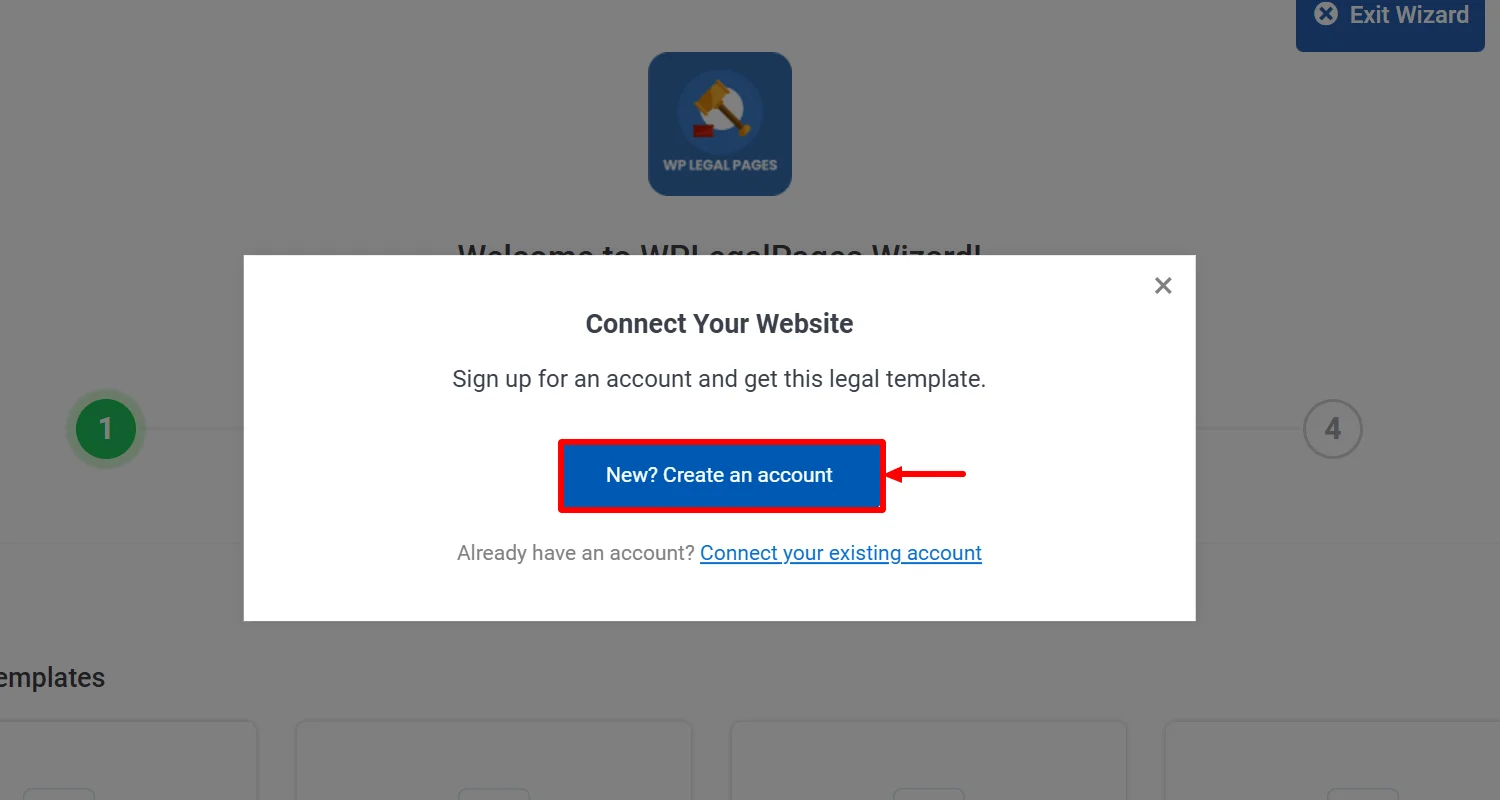
You must sign up by entering your clothing store email address and setting a new password. Then, click on the Sign Up & Connect button.
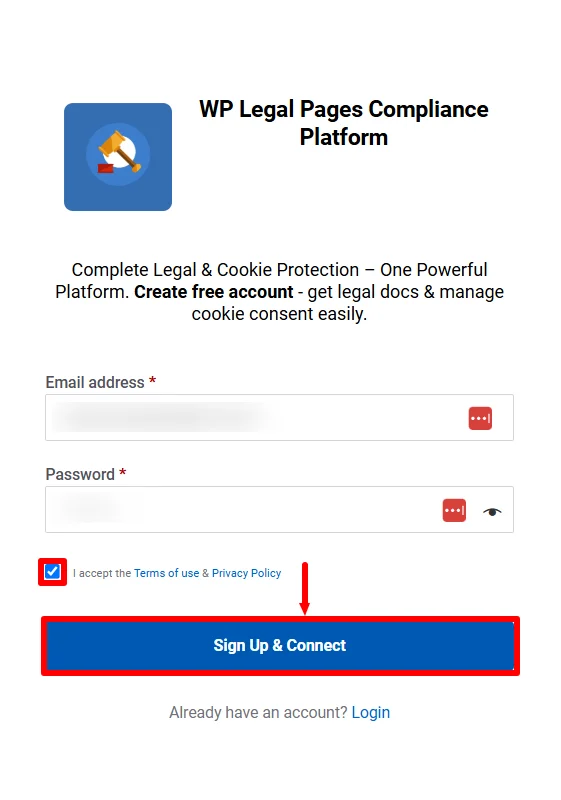
Now, click on the Connect Site button.

Step 3: Making a Privacy Policy for a Clothing Website.
Fill in all the essential information and click on Next.
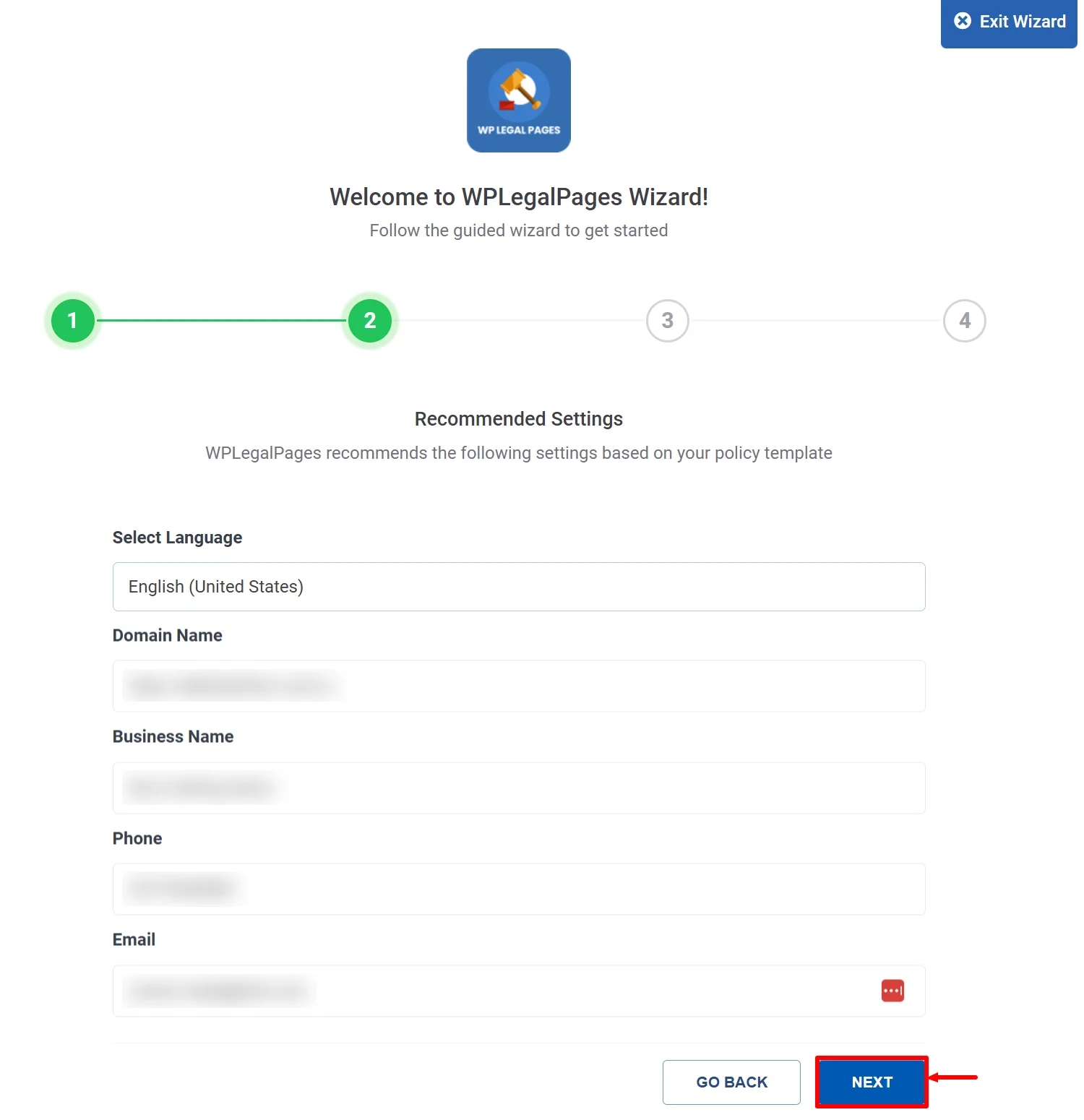
Now select the appropriate sections for your legal policy, then click Next.
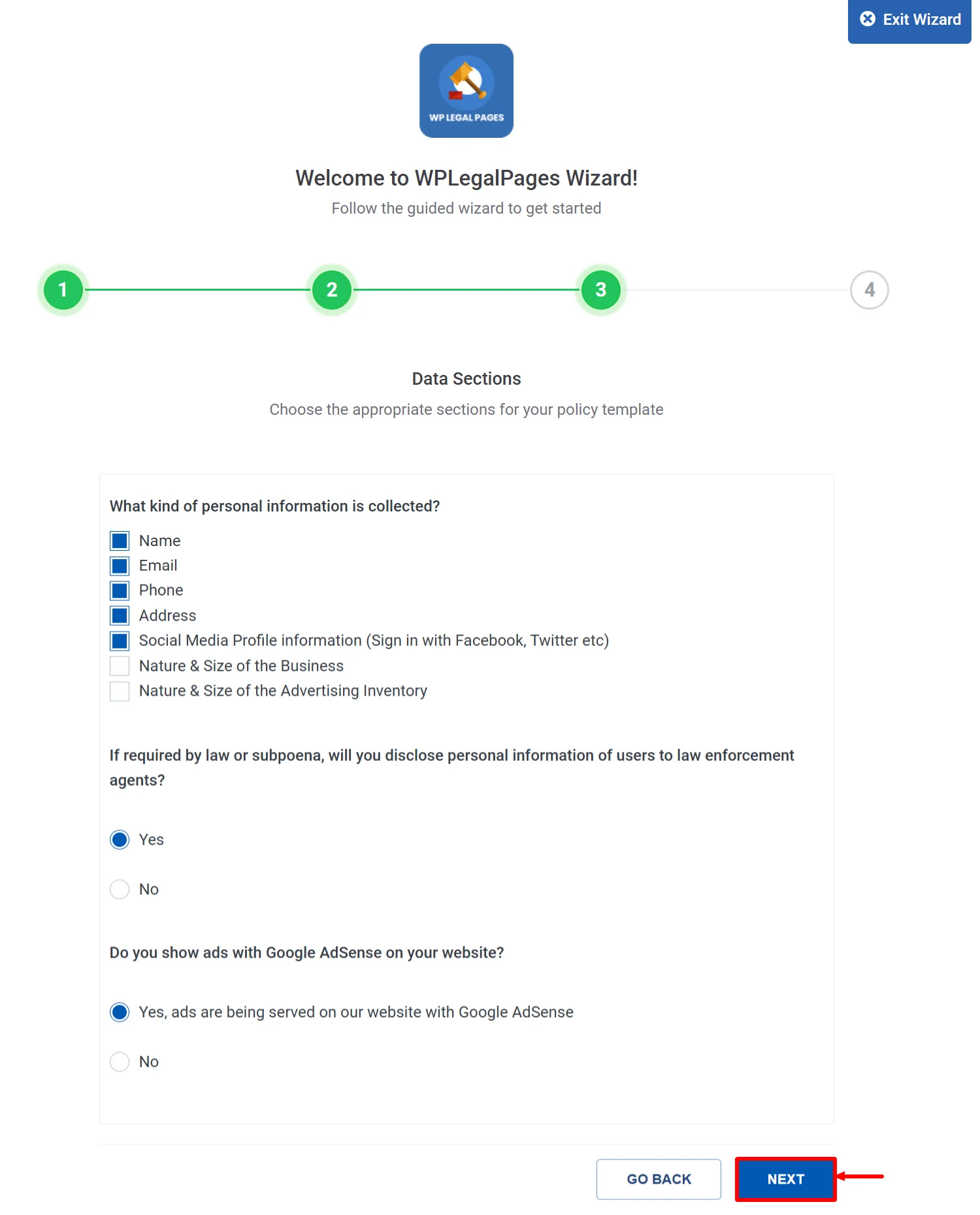
Step 4: Customize Your Clothing Privacy Policy
The preview of your policy template is now ready.
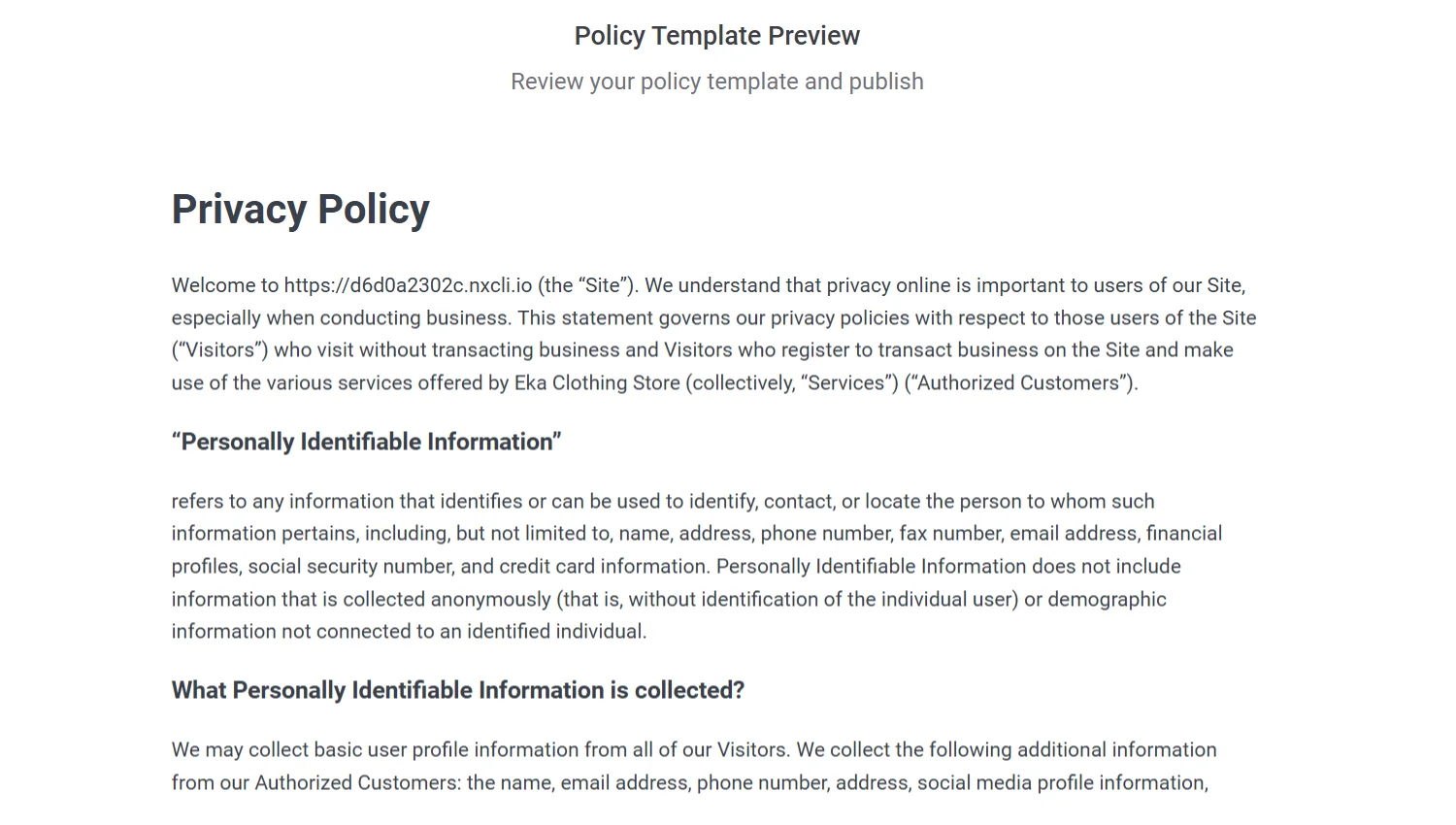
Click the Create and Edit button to edit and personalize the template according to your needs.
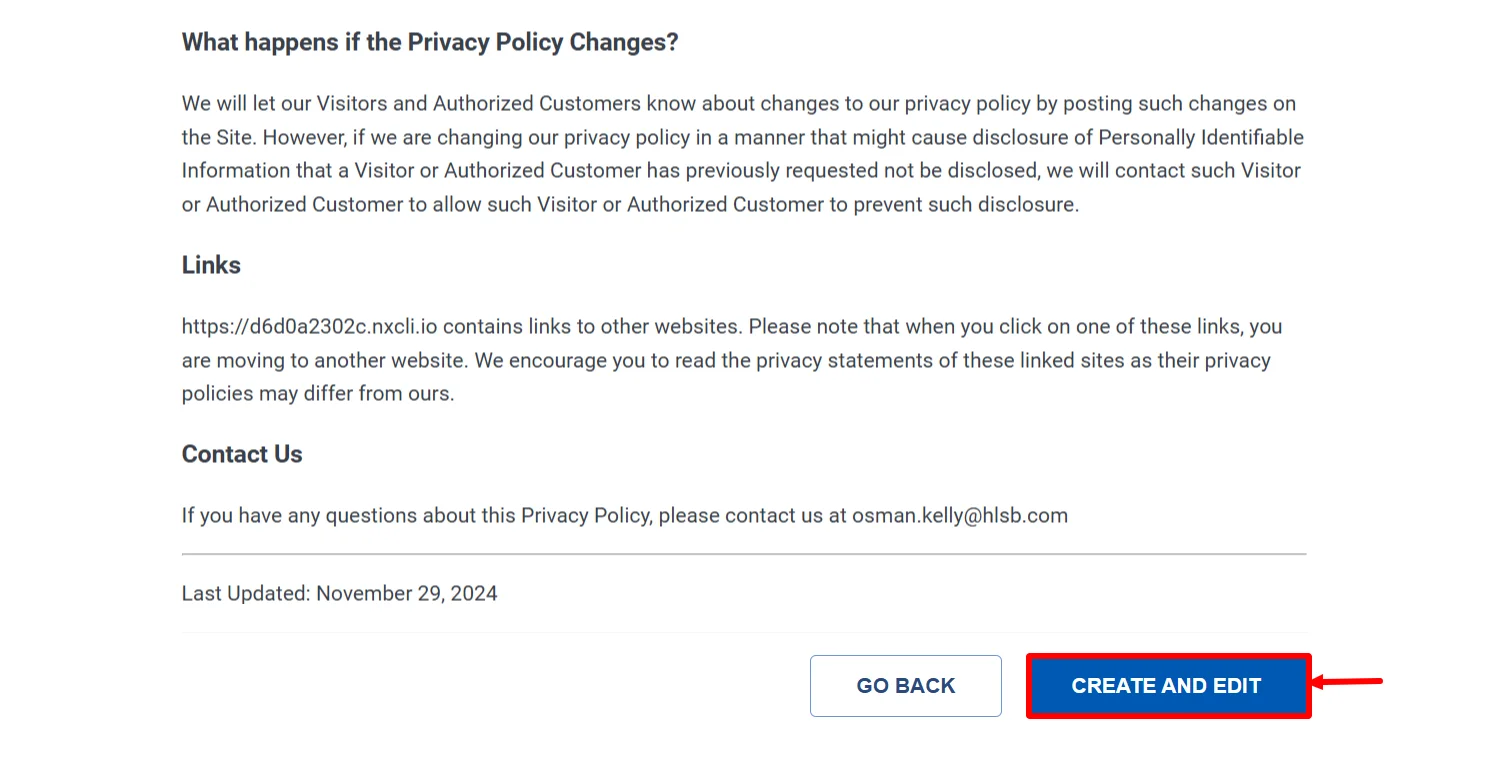
After you’ve made the necessary changes, review your document thoroughly and publish it by clicking on the Publish button.
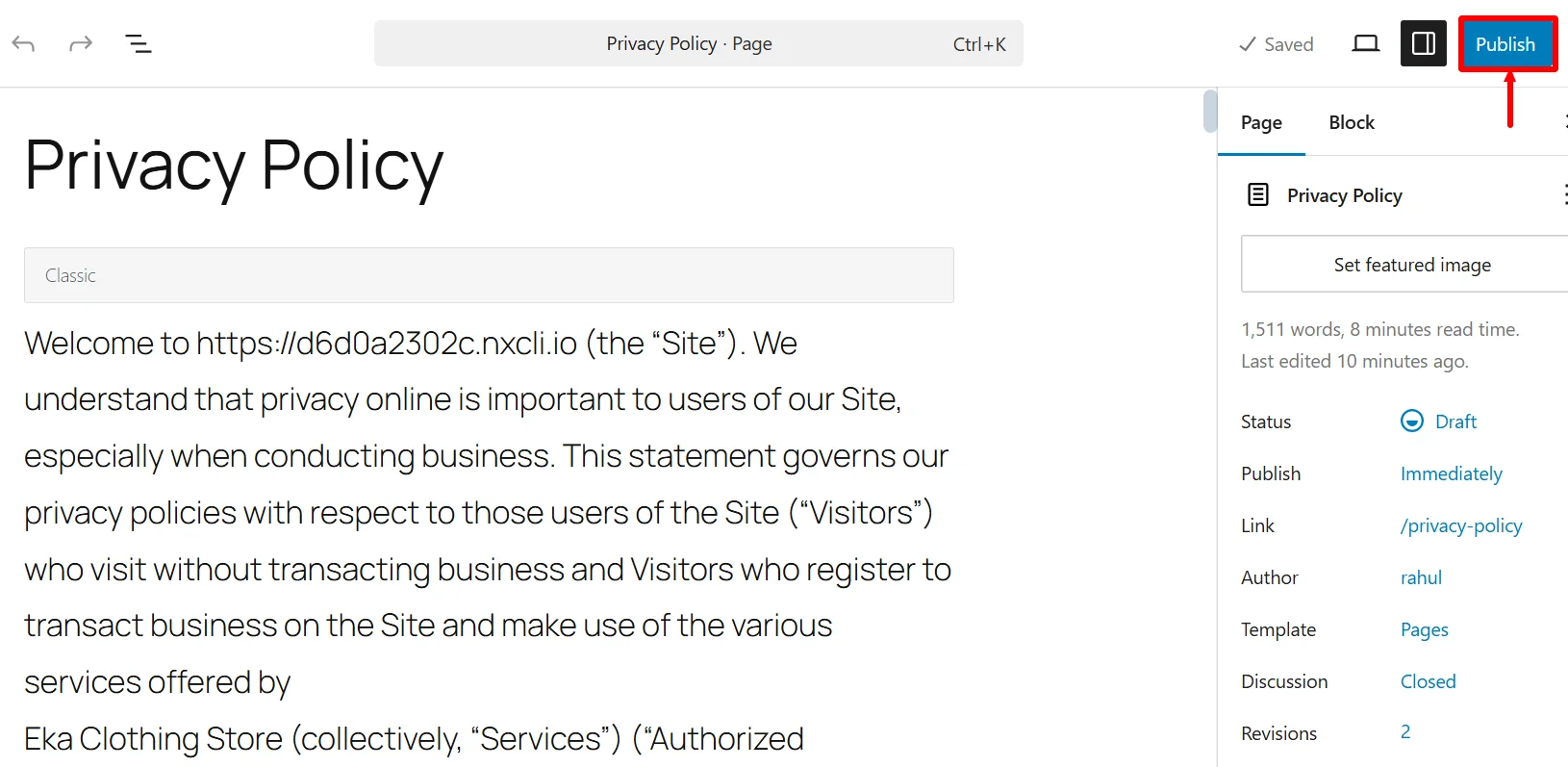
That’s it! You’ve successfully created a privacy policy document for your clothing store all by yourself with just a few clicks.
Where Should You Display Your Clothing Website’s Privacy Policy?
The positioning of your clothing website’s privacy policy is one key aspect that people often don’t consider. Placing it in the right spot will help you build trust and comply with privacy laws. Making the privacy policy visible and accessible to users will show them that you care about protecting their data.
Now, coming to the main point. You can either place the privacy notice in the footer or at checkout or registrations.
If you add your privacy policy to the footer, users can easily navigate it because the footer constantly appears at the end of every page.
Also, displaying the policy during account creation or the checkout process will be really helpful to users. These are the times when customers constantly share their personal information, so they’re more likely to look for it.
Also, ensure you use simple, easy-to-understand language so users can easily read your document.
FAQ
Yes, but using a trusted generator like WP Legal Pages is better to ensure compliance with applicable laws.
Free privacy policy generators like WP Legal Pages or Termly provide customizable templates, saving time and money.
List how you collect, use, and store customer data. Also, Include cookie usage, data sharing, and security practices.
Yes, it’s mandatory if you collect any form of user data.
Yes, free generators are a great start! They save time and provide basic templates tailored to your clothing website’s needs.
Conclusion
In conclusion, a privacy policy is a must-have for your clothing website. It will clearly explain to your users how you’ll handle their personal information, allowing them to rest assured and letting them know that they’re in safe hands.
Our guide must help you a lot in creating a privacy policy by yourself. As the blog mentions, use the WP Legal Pages to generate an authentic and trustworthy privacy policy. It has a bunch of pre-designed templates that you can easily customize to suit your clothing store needs.
Once your privacy policy is ready, place it either in the footer or during the checkout or registration processes. This will ensure maximum visibility and demonstrate transparency.
Ultimately, a clear and accessible privacy policy will protect your clothing from legal risks, foster user trust, and strengthen your brand image. So, be a wise decision-maker and get that privacy policy document to your clothing store.
If you liked reading this article, consider going through the following:
- How to Create a Privacy Policy for Your Travel Website
- How to Create a Privacy Policy for Your Website
- How to Create a Privacy Policy for Your Business Website
Now is your chance! Take the first step and use WP Legal Pages to create a policy that benefits both customers and your business.
